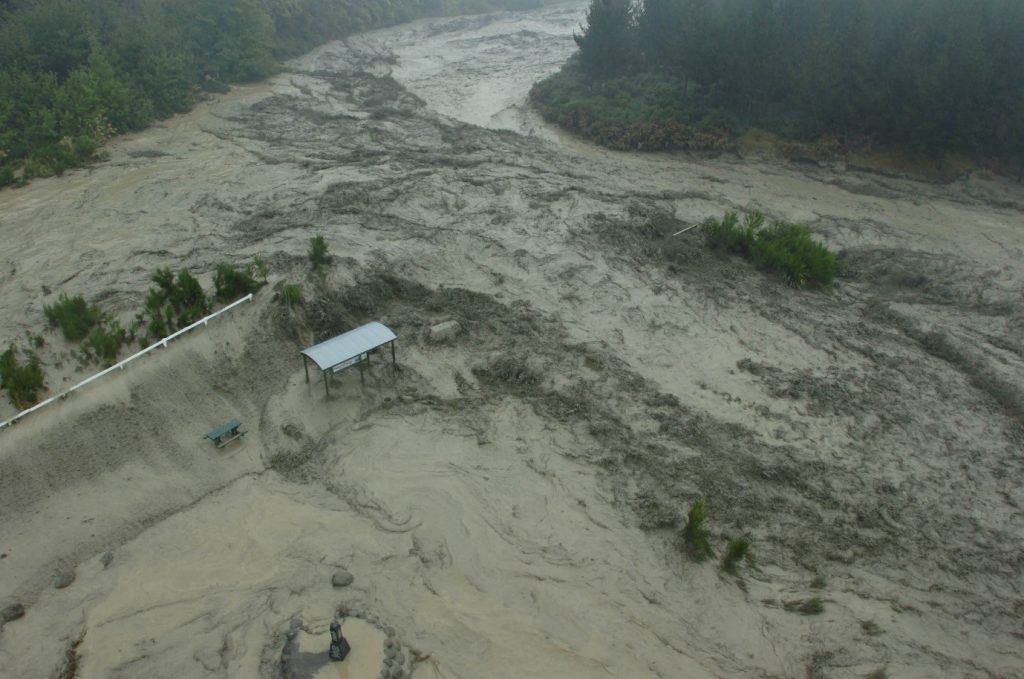Jeremy Phillips, University of Bristol
Mark Woodhouse, University of Bristol
Andrew Hogg, University of Bristol
DOWNLOAD
THE CHALLENGE
Lahars (volcanic mudflows) are high-speed mixtures of volcanic materials and water that result from volcanic eruptions on ice-capped volcanoes or rainfall remobilisation of volcanic ash deposits. The largest flows can travel for up to a few hundred km from their source, and the single most deadly volcanic event in the last century was the Nevado del Ruiz (Colombia) lahar in 1985 that destroyed the town of Armero killing 23,500 people. The dynamics of lahars are very strongly dependent on the topography over which they flow, and they often occur in countries where topographic maps cannot be obtained at high resolution. Furthermore, the flow conditions within lahars are complex and highly variable, and cannot yet be fully described in models. The predominant challenge to developing a predictive model for lahar flow is to achieve an efficient trade-off between the level of detail needed to adequately describe the topography and the incomplete knowledge of the physics of the flow conditions. Analysis of the uncertainty in the model predictions arising from these sources enabled us to address this challenge.
WHAT WAS ACHIEVED
We have developed a new dynamic model for lahar hazard where the model is tuned so that the uncertainty in the model formulation is consistent with the uncertainty in its input conditions, and where the uncertainty on the model predictions is known. This represents a critical advance in being able to assess lahar hazard at large spatial scales, and communicate the level of confidence in the model predictions to risk managers and stakeholders. The model predicts the footprint of the flow, and the time taken for the flow to reach important locations, providing important new information for preparedness against lahar threat. The model is being used for lahar hazard assessment in Colombia and Ecuador and will be available to the natural hazard community worldwide via a web interface.
HOW WE DID IT
Uncertainties in lahar models primarily arise from the inability of the equations used to completely describe the behaviour of the full-scale flow (structural uncertainty), imperfect knowledge of the starting conditions of the flow and the topography over which the flow is travelling (input uncertainty), and uncertainties in measurements of full-scale flows with which the model is being compared (observational uncertainty). We have used a method for examining the structural uncertainty in models (‘history matching’; Vernon et al 2010) that identifies those model inputs that produce outputs which are consistent with uncertain measurements of the full-scale flow, incorporating the input and observational uncertainty. The resulting model is based on the physics of the flow of high concentration particle suspensions on topography, including descriptions of how the flow erodes underlying substrate on steeper slopes and deposits particles on shallower slopes. A key component is a new scheme for implementing the model on coarse resolution topography at a scale consistent with other model uncertainties.
Lahar flow from Mt Ruapehu, New Zealand, 2007 (courtesy V. Manville)
REFERENCES
Vernon I, Goldstein M, Bower RG (2010) Galaxy formation: a Bayesian uncertainty analysis. Bayesian Anal 5(4):619–669. doi:10.1214/10-BA524
